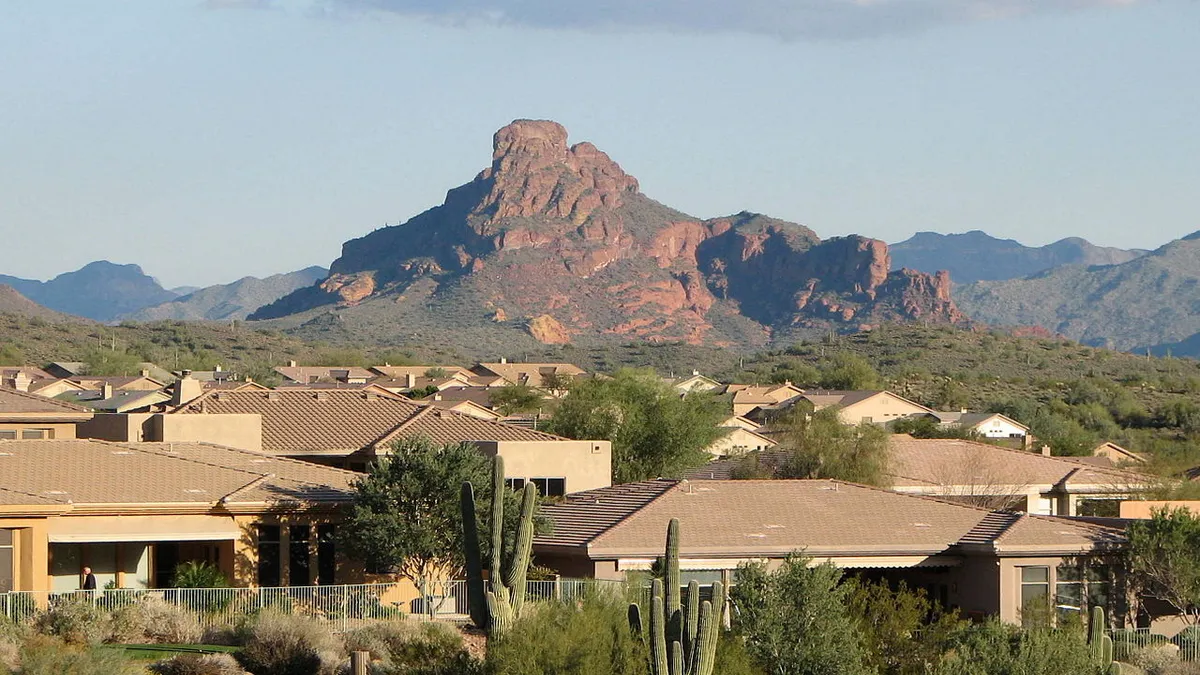Dive Brief:
- Arizona residents paid on average $476.83 in the summer of 2018 to cool their homes, more than three times the national average, according to new data released Monday from residential energy management company Sense.
- The data breaks down average costs to cool homes in the U.S., showing price spikes along the South and Midatlantic. While Arizona uses a lot of air conditioning, states like New Jersey, Maryland and New York have on average larger homes to cool, and therefore higher cooling costs per resident than national averages.
- "A lot of things can go wrong" with heating, ventilation and air conditioning (HVAC) systems, George Zavaliagkos, Sense VP of Technology, told Utility Dive. HVAC payments could increase in the summer because the system is running continuously, driving up cost, or because the temperature in the residence is set too low or the house is leaking cold air.
Dive Insight:
Energy customers are getting increasingly more sophisticated, but dealing with an HVAC system can be a headache, according to Sense CEO Mike Phillips. The report is meant to provide a baseline understanding of what the costs should be, and encourage customers to inform themselves about how much they are paying with their existing system.
Sense wants to use its data to further automate residential energy use. "We're taking some little steps there already" with integrations of remote switches and lighting, "where we can start to control things from the [Sense] application," CEO Mike Phillips told Utility Dive. "We will extend that to EV chargers and thermostats and hot water heaters, where we're providing really good intelligence and information that would help" decide when those applications should run.
While the nationwide average for home cooling costs in the summer of 2018 was $147.82, Arizona residents paid on average $476.83. And it doesn't make a lot of difference whether or not they have their own solar or battery storage system. According to Phillips, customers with distributed generation can be more efficient, but they can also take for granted their energy system and use their HVAC more than they would otherwise.
The second highest price for cooling houses was New Jersey, at $326.65.
The data comes from Sense's customers across 28 states with ten or more homes that use its system. The company estimated the kilowatt hours attributed to cooling for the summer and used the Energy Information Administration averages for electricity prices by state.
They found that southern states with cheaper power had an outsized use of their HVAC system, while other states on the Atlantic Coast were paying more for energy. The cheapest states, along the Canadian border, paid an average of $95 to cool homes in the summer of 2018.















